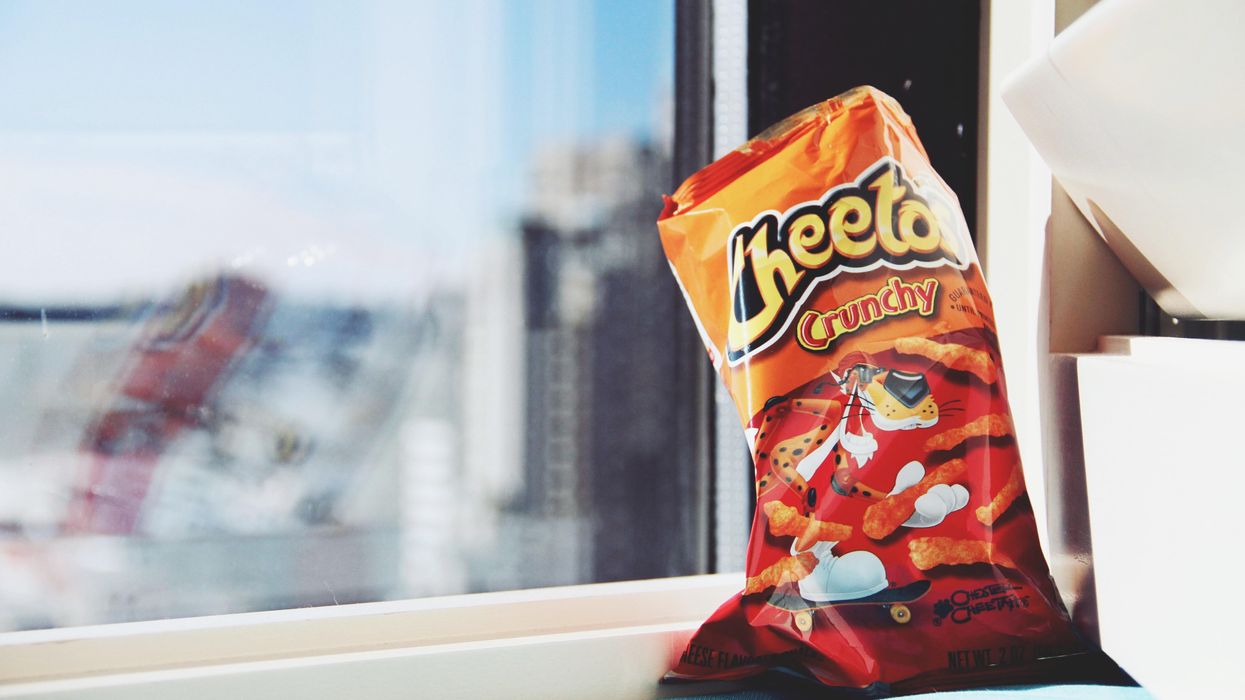Marketing
13 February 2023
Frito-Lay turned name brand chips into essentials
The PepsiCo business wasn't seeing trade-down to private label in 2022.

Photo by Giorgio Trovato on Unsplash
The PepsiCo business wasn't seeing trade-down to private label in 2022.

Throughout 2022, a common narrative emerged that consumers were opting for private label products over name brands as they sought to save money amid 40-year-high inflation.
While grocers from Walmart to Kroger reported a general shift toward their store brands throughout the year, the trend was not uniform across all CPGs.
In particular, some of the country’s most popular chips brands proved resilient in their ability to keep consumers reaching for more.
PepsiCo said its Frito-Lay business, which includes Doritos, Cheetos and Lay’s, delivered double-digit growth of 18% year-over-year in the fourth quarter of 2022, and 17% for the year. It also gained share in key categories during the year.
“The business continues to benefit from strong category trends as consumers navigate towards popular, trusted brands that offer value, convenience, and variety,” top executives wrote in prepared remarks ahead of the company’s most recent earnings call.
Even as inflation rose, there were signs throughout the year that consumers were opting for Frito Lay products as they sought savings. Frito Lay’s multipack became a poster child of the consumer desire to stock up on essentials when it became one of the top selling items during July’s Prime Day, per data from Numerator.
Frito Lay’s prime positioning wasn’t accidental. PepsiCo CEO Ramon Laguarta called the snack business the “jewel” of the company.
“We've put a lot of investments in the last couple of years and [Frito-Lay] continues to respond every year better to those investments,” Laguarta said, adding that the company invested in upping marketing spend, product innovation and clearing infrastructure bottlenecks.
The result is a business with 11% operating profit growth in 2023, which Laguarta called historically high.
“We feel like Frito had just an outstanding year,” said CFO Hugh Johnston. “We'd love to have a couple more like this one.”
Make your brand essential. Frito-Lay sells chips and snacks, but the company’s growth indicates that consumers see it further up the pyramid. They're the types of brand that people seek out as a treat as they seek to feel better, similar to beauty products. This is a result not just of innovation, but brand recognition that has turned products into categories. When people see Doritos, they don’t think they’re buying cheesy tortilla chips. They simply think they are buying Doritos, and that makes them a staple. Instead of looking for other brands that are cheaper, people sought savings by stocking up on Prime Day.
There’s opportunity in a downturn. PepsiCo recognized that Frito-Lay had a big opportunity, and invested. It’s a time when many companies are pulling back due to the collision of inflation and a consumer downshift. But the parts of a business that are working can benefit from a boost, no matter what’s happening in the economy.
New advertising opportunities are being beta tested for in-store audio and product demos.
Retail media’s fast growth isn’t only limited to increasing spend. The advertising itself is also poised to appear in more places beyond ecommerce marketplaces, and even beyond the web.
The latest example comes from Walmart Connect, which is the retail media arm of the world’s largest retailer.
Walmart shared details on testing that it is completing for in-store retail media. To this point, Walmart Connect has been considered the advertising platform for Walmart’s ecommerce site. But these tests indicate that’s poised to expand.
Stores present a potent opportunity for Walmart. It has 4,700 big box locations around the U.S., and customers returned to them in droves last year. In 2022, 88% of the retailer’s customers visited Walmart stores.
Walmart Connect already has already dipped a toe into in-store advertising, with a TV wall, self-checkout ads and integrated marketing. The new pilots aim to take a step further.
“The next frontier of retail media is in-store experiences, and it’s one we’re excited to chart,” Whitney Cooper, head of omnichannel transformation at Walmart Connect, wrote in a blog post on the new tests. “But it’s still an emerging opportunity for us, as we continue to test what serves customers best and which solutions are scalable to Walmart’s size.”
Here’s a look at the two new offerings currently under beta test:
Walmart suppliers will be able to integrate product demos into campaigns across in-store and digital environments.
Product demos aren’t new to store floors, but Walmart Connect is seeking to give them an update that blends digital and physical experiences.
“Part of our test is how to enhance the omnichannel experience by bridging the physical back to digital: For example, by pairing a demo cart with QR codes that link back to a curated Walmart.com landing page so customers can find inspiration and shop their list all in one spot,” Cooper wrote.
Walmart is currently offering 120 demos at stores each weekend, and plans to scale to 1,000 by the end of 2023.
Walmart Connect will now offer advertising placements on Walmart’s in-store radio network. Suppliers will have the option to purchase ads by region or store, enabling targeting of key markets.
“This is the first time brands will be able to speak directly to Walmart customers through this medium,” Cooper writes. “These ads also create a new upper-funnel touchpoint for brand marketers and out-of-home (OOH) buyers to create awareness, because in-store audio is about connecting with customers wherever they are in the store — they don’t have to pass the brand in the aisle.”
With the tests, we’ll be watching for how this advertising is measured, and whether Walmart Connect is tracking impact across different types of formats, and not just a single campaign.